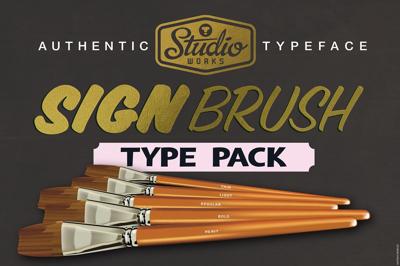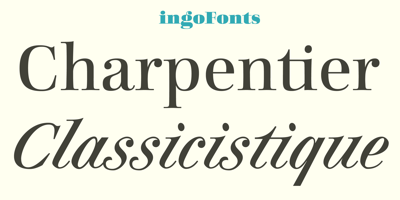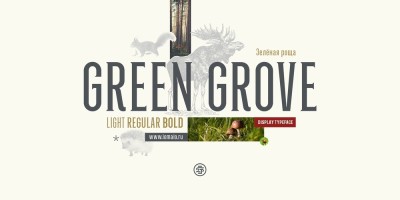Inflated 3D Typography: The Dimensional Font Trend of 2025
Inflated 3D Typography: The Dimensional Font Trend of 2025
Typography is experiencing a revolutionary transformation in 2025, with inflated 3D fonts emerging as the most captivating and commercially successful design trend in recent memory. These dimensional letterforms, which appear to float off the page with balloon-like volume and tactile presence, are reshaping how American brands communicate across digital and physical media, creating unprecedented opportunities for engagement and memorability.
Unlike traditional flat typography or simple drop-shadow effects, inflated 3D fonts leverage advanced rendering technologies and sophisticated design techniques to create letterforms that feel genuinely three-dimensional, tactile, and almost interactive. This trend represents more than aesthetic evolution – it's a fundamental shift toward typography that demands attention and creates emotional connection in an increasingly crowded visual landscape.
For American designers, marketers, and business owners, understanding and implementing inflated 3D typography can provide significant competitive advantages in capturing audience attention while creating memorable brand experiences that drive engagement and conversion.
The Technology Behind Inflated 3D Typography
Advanced Rendering and Real-Time Graphics
The inflated 3D typography trend has become practical due to dramatic improvements in graphics processing power and web-based 3D rendering technologies. Modern browsers now support sophisticated WebGL implementations that enable real-time 3D typography effects without requiring specialized plugins or software.
This technological advancement allows designers to create genuinely three-dimensional letterforms that respond to user interaction, environmental lighting, and dynamic animation sequences. The result is typography that feels alive and engaging rather than static and passive.
American tech companies have been early adopters of these technologies, recognizing their potential for creating distinctive brand experiences that capture user attention in competitive digital environments. The processing power required for inflated 3D typography has become accessible enough for widespread commercial implementation.
CSS and JavaScript Implementation
Contemporary inflated 3D typography often relies on advanced CSS3 properties and JavaScript libraries that enable sophisticated dimensional effects without requiring specialized 3D software or complex rendering pipelines.
Properties like transform-style: preserve-3d, perspective, and rotateX/Y/Z enable designers to create convincing dimensional effects using standard web technologies. JavaScript libraries like Three.js provide more advanced capabilities for complex animated sequences and interactive typography experiences.
This accessibility has democratized inflated 3D typography, enabling designers and developers across America to experiment with dimensional effects without requiring extensive 3D modeling experience or expensive specialized software.
Performance Optimization Strategies
While inflated 3D typography creates compelling visual experiences, it requires careful optimization to maintain performance across different devices and connection speeds – particularly important for American audiences accessing content on diverse mobile devices and network conditions.
Successful implementations balance visual impact with technical performance through strategic level-of-detail optimization, efficient texture compression, and intelligent loading sequences that prioritize critical content while enhancing experiences for users with capable devices.
Psychological Impact and User Engagement
Depth Perception and Visual Hierarchy
Inflated 3D typography leverages fundamental aspects of human visual perception to create more engaging and memorable communications. The dimensional depth and tactile appearance of inflated fonts naturally draw attention and create clear visual hierarchy that guides user attention through complex information landscapes.
Research conducted among American consumers reveals that dimensional typography generates significantly higher engagement rates compared to traditional flat alternatives, with users spending 25-40% more time interacting with content featuring well-implemented 3D typographic elements.
The psychological impact extends beyond simple attention-grabbing – dimensional typography creates feelings of depth, sophistication, and technological advancement that enhance brand perception and user experience quality.
Tactile Association and Emotional Connection
Inflated 3D fonts trigger psychological associations with physical objects and tactile experiences that create stronger emotional connections compared to traditional flat typography. The balloon-like appearance of inflated letterforms evokes feelings of playfulness, approachability, and interactive possibility.
These associations prove particularly valuable for American brands seeking to create memorable experiences that stand out in crowded digital environments while building emotional connections that drive brand loyalty and customer engagement.
The tactile quality of inflated typography also suggests interactivity and responsiveness, encouraging user engagement and exploration that can improve website metrics and conversion rates.
Novelty and Innovation Perception
The relative newness of inflated 3D typography enables early adopters to project innovation and forward-thinking brand personality that appeals to American consumers increasingly seeking authentic, cutting-edge experiences from the brands they support.
Businesses implementing inflated typography effectively can differentiate themselves from competitors using traditional flat design approaches while demonstrating technological sophistication and creative leadership.
Industry Applications and Success Stories
Entertainment and Gaming Industries
The entertainment industry has embraced inflated 3D typography for movie posters, game interfaces, and promotional materials where visual impact and memorability are essential for commercial success.
Major American film studios use inflated typography for action movies and animated features where the dimensional effects complement the immersive nature of the content while creating distinctive poster designs that capture attention in crowded media landscapes.
Gaming companies leverage inflated 3D fonts for user interfaces and promotional materials that suggest the dimensional, interactive nature of gaming experiences while creating brand consistency across diverse marketing touchpoints.
Technology and Software Companies
Tech companies have been early adopters of inflated 3D typography, using dimensional effects to suggest innovation, cutting-edge capabilities, and user-friendly design approaches that appeal to both technical and general audiences.
Software companies use inflated typography for product launches and feature announcements where the dimensional effects suggest depth, capability, and sophisticated functionality that justifies premium pricing and encourages user adoption.
Startups particularly benefit from inflated typography's ability to project innovation and technological sophistication while creating memorable brand experiences that help new companies establish market presence and user recognition.
Fashion and Lifestyle Brands
Fashion brands use inflated 3D typography to create luxury and sophistication associations while maintaining contemporary appeal that resonates with style-conscious American consumers seeking authentic, cutting-edge brand experiences.
The dimensional quality of inflated fonts works particularly well for lifestyle brands seeking to suggest premium quality and innovative design approaches while creating social media content that generates engagement and sharing among target audiences.
Beauty and cosmetics companies leverage inflated typography for product launches and seasonal campaigns where the tactile, luxurious appearance of dimensional fonts complements premium product positioning and aspirational brand messaging.
Implementation Techniques and Best Practices
Color and Lighting Strategies
Effective inflated 3D typography relies heavily on sophisticated color and lighting approaches that enhance dimensional effects while maintaining readability and brand consistency across different viewing contexts.
Gradient Application: Use subtle gradients that suggest natural lighting and dimensional form, typically transitioning from lighter tones at assumed light sources to deeper shadows at recessed areas.
Highlight and Shadow Balance: Implement realistic highlight and shadow patterns that enhance dimensional perception without compromising readability or creating visual confusion.
Brand Color Integration: Adapt inflated effects to work within existing brand color palettes, ensuring dimensional typography enhances rather than conflicts with established visual identity systems.
Animation and Interaction Design
The dimensional nature of inflated typography creates excellent opportunities for engaging animation sequences and interactive experiences that capture user attention while providing functional communication benefits.
Subtle Movement: Implement gentle floating, rotation, or scaling animations that enhance the balloon-like character of inflated fonts without creating distraction or accessibility issues.
User Interaction Response: Design hover effects and click responses that reinforce the tactile, interactive qualities suggested by dimensional appearance.
Loading Sequences: Create engaging loading animations where inflated typography appears to inflate or deflate, providing entertaining transitions while content loads.
Scalability and Responsive Design
Inflated 3D typography must work effectively across the full range of American device usage patterns, from large desktop displays to small smartphone screens, requiring sophisticated responsive design strategies.
Device-Appropriate Complexity: Implement different levels of dimensional detail based on device capabilities, providing full effects for powerful devices while maintaining brand consistency on lower-performance alternatives.
Touch Interface Optimization: Ensure inflated typography works well for touch interaction patterns while maintaining adequate touch target sizes and intuitive user experience.
Performance Scaling: Design effects that gracefully degrade on slower connections or older devices without compromising core functionality or brand messaging.
Tools and Resources for Creating Inflated 3D Typography
Design Software and Plugins
Several design tools have emerged to support inflated 3D typography creation, making dimensional effects accessible to designers without extensive 3D modeling experience.
Adobe After Effects: Provides comprehensive tools for creating sophisticated inflated typography effects with advanced lighting, animation, and rendering capabilities.
Cinema 4D: Offers professional-grade 3D modeling and rendering specifically optimized for typography and motion graphics applications.
Blender: This free, open-source 3D software has become increasingly popular for inflated typography creation, offering professional capabilities without licensing costs.
Web-Based Implementation Tools
Three.js: This JavaScript library provides comprehensive WebGL support for implementing interactive 3D typography effects directly in web browsers.
CSS3 and Transform Properties: Modern CSS enables sophisticated dimensional effects using standard web technologies without requiring external libraries or plugins.
WebGL Frameworks: Various frameworks simplify WebGL implementation for designers and developers seeking to create custom inflated typography effects.
Font Resources and Starting Points
While traditional fonts provide starting points for inflated effects, several typefaces work particularly well for dimensional treatments:
Geometric Sans-Serifs: Fonts like Montserrat, Raleway, and Source Sans Pro provide clean letterforms that accept dimensional treatments effectively while maintaining readability.
Bold Display Fonts: Heavy weights of fonts like Oswald, Bebas Neue, and Anton create dramatic dimensional effects that work well for headline applications.
Rounded Fonts: Typefaces like Nunito, Quicksand, and Comfortaa naturally suggest the rounded, inflated aesthetic that defines this typography trend.
Commercial Applications and ROI Considerations
Marketing Campaign Effectiveness
American companies implementing inflated 3D typography in marketing campaigns consistently report improved engagement metrics, higher click-through rates, and increased brand recall compared to traditional flat typography approaches.
The novelty and visual appeal of dimensional typography help marketing messages stand out in crowded advertising environments while creating memorable brand experiences that drive customer action and loyalty.
Social media campaigns featuring inflated typography generate higher sharing rates and engagement levels, providing measurable return on investment for companies seeking to expand brand awareness and audience reach.
E-commerce and Conversion Optimization
Online retailers using inflated 3D typography for product presentation and promotional materials report improved conversion rates and reduced bounce rates compared to traditional flat design approaches.
The premium, sophisticated appearance of dimensional typography helps justify higher pricing while creating shopping experiences that feel innovative and engaging rather than routine or commoditized.
Product launch campaigns featuring inflated typography generate higher pre-order rates and customer excitement, demonstrating the commercial value of dimensional design approaches.
Brand Differentiation and Market Positioning
Companies adopting inflated 3D typography early gain significant competitive advantages in market positioning and brand differentiation, particularly in crowded industries where visual distinction becomes crucial for business success.
The association between dimensional typography and technological innovation helps brands position themselves as forward-thinking and customer-focused, appealing to American consumers seeking cutting-edge products and services.
Future Evolution and Trends
Augmented Reality Integration
The trend toward inflated 3D typography naturally leads toward augmented reality applications where dimensional fonts can exist in real physical spaces, creating unprecedented opportunities for immersive brand experiences.
American companies are beginning to experiment with AR applications where inflated typography appears to float in real environments, creating magical brand interactions that drive engagement and social sharing.
AI-Generated Dimensional Effects
Artificial intelligence tools are emerging that can automatically generate sophisticated inflated 3D effects from traditional flat fonts, democratizing access to dimensional typography while enabling rapid experimentation and customization.
Interactive and Responsive Typography
Future developments will likely include typography that responds dynamically to user behavior, environmental conditions, and contextual factors, creating truly intelligent dimensional communication experiences.
Inflated 3D typography represents more than a visual trend – it's a fundamental evolution toward more engaging, memorable, and effective visual communication. For American businesses and designers, mastering this technique provides significant competitive advantages in capturing attention and creating brand experiences that drive commercial success.
Whether you're designing marketing campaigns, developing brand identities, or creating digital experiences, inflated 3D typography offers powerful tools for creating distinctive, memorable communications that resonate with contemporary American audiences seeking authentic, innovative brand interactions.
The key to success lies in implementing dimensional effects thoughtfully, balancing visual impact with practical functionality while ensuring that inflated typography enhances rather than overwhelms your core message and brand objectives.




